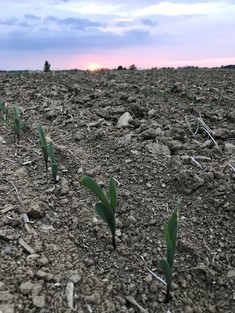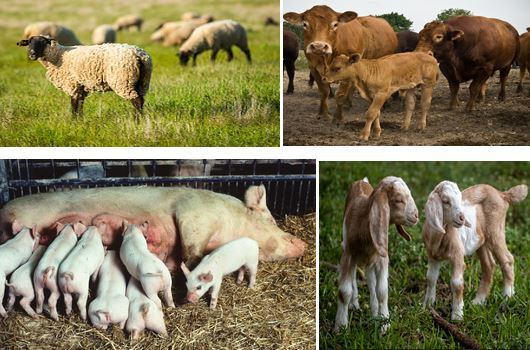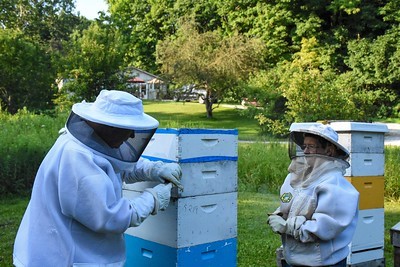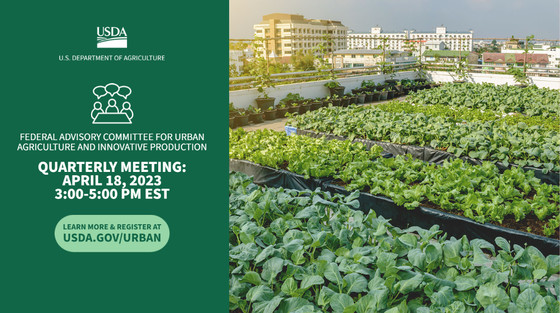
As we navigate this first full week of April, across this state, Hoosiers are coming together to assist and support one another following the devastating storms and 19 tornadoes that wreaked havoc on numerous counties. Hundreds of homes and numerous farming operations were destroyed just as the time of year is here to get into the fields. In Indiana, we come together to help our neighbors in time of need, and rural Indiana received a brunt of the devastation this first weekend of April.
Indiana residents impacted by the storms are asked to contact Indiana 211 to report damages and to help with damage assessment. At FSA, we are asking you – our customer - to reach out to your local county office to report all damages and losses to learn how FSA can help.
FSA offers many programs to help producers recover from losses, including the Livestock Indemnity Program (LIP), the Emergency Assistance for Livestock, Honeybees, and Farm-Raised Fish Program (ELAP) and the Tree Assistance Program. Producers located in counties receiving a primary or contiguous disaster designation are eligible for low-interest emergency loans to help them recover from production and physical losses.
Our state office is working closely with affected counites to collect information so an Administrator’s Loss Notification can be submitted to the national office in Washington DC by the end of the month. Please contact your local FSA office for more information about our disaster assistance programs or visit farmers.gov/recover.
Please continue to stay safe as we navigate the unpredictable Indiana spring weather. And, as Mother Nature permits, have a great planting season!
|
 State Executive Director
USDA offers several programs to help with recovery from the storms that have impacted farmers in several Indiana counties.
Risk Management
For producers who have risk protection through Federal Crop Insurance or the Noninsured Crop Disaster Assistance Program (NAP), we want to remind you to report crop damage to your crop insurance agent or the local Farm Service Agency (FSA) office.
If you have crop insurance, contact your agency within 72 hours of discovering damage and be sure to follow up in writing within 15 days. If you have NAP coverage, file a Notice of Loss (also called Form CCC-576) within 15 days of loss becoming apparent, except for hand-harvested crops, which should be reported within 72 hours.
Disaster Assistance
USDA also offers disaster assistance programs, which is especially important to livestock, fruit and vegetable, specialty and perennial crop producers who have fewer risk management options.
First, the Livestock Indemnity Program (LIP) and Emergency Assistance for Livestock, Honeybee and Farm-raised Fish Program (ELAP) reimburses producers for a portion of the value of livestock, poultry and other animals that died as a result of a qualifying natural disaster event or for loss of grazing acres, feed and forage.
Next, the Tree Assistance Program (TAP) provides cost share assistance to rehabilitate and replant tree, vines or shrubs loss experienced by orchards and nurseries. This complements NAP or crop insurance coverage, which cover the crop but not the plants or trees in all cases.
For LIP and ELAP, you will need to file a Notice of Loss for livestock and grazing or feed losses within 30 days and honeybee losses within 15 days. For TAP, you will need to file a program application within 90 days.
Documentation
It’s critical to keep accurate records to document all losses following this devastating event. Livestock producers are advised to document beginning livestock numbers by taking time and date-stamped video or pictures prior and after the loss, maintaining purchase, production, vaccination records, bank and loan documents and by having third party certifications.
Other Programs
The Emergency Conservation Program and Emergency Forest Restoration Program can assist landowners and forest stewards with financial and technical assistance to restore damaged farmland or forests.
Additionally, FSA offers a variety of loans available including emergency loans that are triggered by disaster declarations and operating loans that can assist producers with credit needs. You can use these loans to replace essential property, purchase inputs like livestock, equipment, feed and seed, or refinance farm-related debts, and other needs.
Meanwhile, USDA’s Natural Resources Conservation Service (NRCS) provides financial resources through its Environmental Quality Incentives Program to help with immediate needs and long-term support to help recover from natural disasters and conserve water resources. Assistance may also be available for emergency animal mortality disposal from natural disasters and other causes.
Additional Resources
Additional details – including payment calculations – can be found on our NAP, ELAP, LIP, and TAP fact sheets. On farmers.gov, the Disaster Assistance Discovery Tool, Disaster-at-a-Glance fact sheet, and Farm Loan Discovery Tool can help you determine program or loan options.
While we never want to have to implement disaster programs, we are here to help. To file a Notice of Loss or to ask questions about available programs, contact your local USDA Service Center.
If you have damage to structures under loan with FSA through the Farm Storage Facility Loan (FSFL) Program or if you have a commodity loan under the Marketing Assistance Program (MAL) with FSA that was stored in a damaged structure, contact your local USDA Service Center for guidance.

The Livestock Indemnity Program (LIP) provides assistance to you for livestock deaths in excess of normal mortality caused by adverse weather, disease and attacks by animals reintroduced into the wild by the federal government or protected by federal law.
For disease losses, FSA county committees can accept veterinarian certifications that livestock deaths were directly related to adverse weather and unpreventable through good animal husbandry and management.
For 2023 livestock losses, you must file a notice within 30 calendar days of when the loss is first apparent. You then must provide the following supporting documentation to your local FSA office no later than 60 calendar days after the end of the calendar year in which the eligible loss condition occurred.
- Proof of death documentation
- Copy of grower’s contracts
- Proof of normal mortality documentation
Indiana FSA has established normal mortality rates for each type and weight range of eligible livestock, i.e. Adult Beef Cow = 1.5%, Non-Adult Beef Cattle (800 pounds or more) = 2.5% and Non-Adult Beef Cattle (less than 800 pounds) = 5%. These established percentages reflect losses that are considered expected or typical under “normal” conditions.
In addition to filing a notice of loss within 30 days of when the loss is apparent, you must also submit an application for payment by March 1, 2024.
For more information, contact your local USDA Service Center or visit fsa.usda.gov.
|
ELAP provides emergency assistance to eligible livestock, honeybee, and farm-raised fish producers who have losses due to disease, adverse weather or other conditions, such as blizzards and wildfires, not covered by other agricultural disaster assistance programs.
Eligible losses include:
-
Livestock - grazing losses not covered under the Livestock Forage Disaster Program (LFP), loss of purchased feed and/or mechanically harvested feed due to an eligible adverse weather event, additional cost of transporting water because of an eligible drought and additional cost associated with gathering livestock to treat for cattle tick fever.
-
Honeybee - loss of purchased feed due to an eligible adverse weather event, cost of additional feed purchased above normal quantities due to an eligible adverse weather condition, colony losses in excess of normal mortality due to an eligible weather event or loss condition, including CCD, and hive losses due to eligible adverse weather.
-
Farm-Raised Fish - death losses in excess of normal mortality and/or loss of purchased feed due to an eligible adverse weather event.
If you’ve suffered eligible livestock, honeybee, or farm-raised fish losses during calendar year 2023, you must file:
- A notice of loss within 30 calendar days after the loss is apparent (15 days for honeybee losses);
- An application for payment by Jan. 30, 2024.
For more information, contact your local USDA Service Center or visit fsa.usda.gov.

FSA's Emergency Assistance for Livestock, Honeybees and Farm-Raised Fish Program (ELAP) offers assistance specific to honeybee producers. For honeybees, ELAP covers colony losses, honeybee hive losses (the physical structure) and honeybee feed losses in instances where the colony, hive or feed has been destroyed by a natural disaster or, in the case of colony losses, because of Colony Collapse Disorder. Colony losses must be in excess of normal mortality.
Producers have 15 days from when the loss is first apparent, instead of 30 days, to file a honeybee notice of loss. This provides consistency between ELAP and the Noninsured Crop Disaster Assistance Program, which also has a 15-day notice of loss period for honey.
ELAP is calendar year specific. Since you are required to apply for payment within 30 calendar days of the end of the program year, the signup deadline for calendar year 2023 losses is January 30, 2024.
If you were paid for the loss of a honeybee colony or hive in either or both of the previous two years, you will be required to provide additional documentation to substantiate how your current year inventory was acquired.
If the honeybee colony loss was caused by Colony Collapse Disorder, you must provide a producer certification that the loss was a direct result of at least three of the five symptoms of Colony Collapse Disorder, which include:
- the loss of live queen and/or drone bee populations inside the hives;
- rapid decline of adult worker bee population outside the hives, leaving brood poorly or completely unattended;
- absence of dead adult bees inside the hive and outside the entrance of the hive;
- absence of robbing collapsed colonies; and
- at the time of collapse, varroa mite and Nosema populations are not at levels known to cause economic injury or population decline.
For more information, contact your local USDA Service Center or visit farmers.gov/recover.
|
If you’re an orchardist or nursery tree grower who experienced losses from natural disasters during calendar year 2023, you must submit a TAP application either 90 calendar days after the disaster event or the date when the loss is apparent.
TAP provides financial assistance to help you replant or rehabilitate eligible trees, bushes and vines damaged by natural disasters.
Eligible tree types include trees, bushes or vines that produce an annual crop for commercial purposes. Nursery trees include ornamental, fruit, nut and Christmas trees that are produced for commercial sale. Trees used for pulp or timber are ineligible.
To qualify for TAP, orchardists must suffer a qualifying tree, bush or vine loss in excess of 15 percent mortality from an eligible natural disaster, plus an adjustment for normal mortality. The eligible trees, bushes or vines must have been owned when the natural disaster occurred; however, eligible growers are not required to own the land on which the eligible trees, bushes and vines were planted.
If the TAP application is approved, the eligible trees, bushes and vines must be replaced within 12 months from the date the application is approved. The cumulative total quantity of acres planted to trees, bushes or vines, for which you can receive TAP payments, cannot exceed 1,000 acres annually.
For more information, contact your local USDA Service Center or visit fsa.usda.gov.
USDA offers programs to help producers recover from disasters;
FEMA can help you prepare ahead of time.
The Federal Emergency Management Agency (FEMA) has a free mobile app that explains what to do before, during and after emergencies. The app is available for download for Apple, Android and Blackberry mobile devices.
Download the app to:
- Receive alerts from the National Weather Service for up to five locations
- Get safety reminders, read tips to survive natural disasters and customize your emergency checklist
- Locate open shelters and where to talk to FEMA in person (or on the phone)
- Upload and share your disaster photos to help first responders.
For more information about the FEMA app, visit fema.gov/mobile-app. To download the FEMA app from the Apple Store visit itunes.apple.com/us/app/fema/id474807486?mt=8. To download the FEMA app on Google Play for Android visit: play.google.com/store/apps/details?id=gov.fema.mobile.android&hl=en
Agriculture producers and private landowners have until April 7, 2023, to apply for the General Conservation Reserve Program (CRP). CRP is a cornerstone voluntary conservation program offered by the U.S. Department of Agriculture (USDA) and a key tool in USDA’s effort to address climate change and help agricultural communities invest in the long-term well-being of their land and natural resources.
General CRP helps producers and landowners establish long-term, resource-conserving plant species, such as approved grasses or trees, to control soil erosion, improve water quality and enhance wildlife habitat on cropland. Additionally, General CRP includes a Climate-Smart Practice Incentive to help increase carbon sequestration and reduce greenhouse gas emissions by helping producers and landowners establish trees and permanent grasses, enhance wildlife habitat, and restore wetlands.
Contact your local USDA Service Center to set up an appointment to apply. For more information visit fsa.usda.gov.
 Meeting will take place April 18, 3-5pm ET
We’re inviting urban producers, innovative producers, and other stakeholders to virtually attend a public meeting of the Federal Advisory Committee for Urban Agriculture and Innovative Production on April 18 from 3-5pm. Learn more and register at Urban Producers, Public Invited to Attend April Meeting of Federal Advisory Committee for Urban Agriculture and Innovative Production | Natural Resources Conservation Service (usda.gov)
The U.S. Department of Agriculture (USDA) today announced that beginning in April it will provide approximately $123 million in additional, automatic financial assistance for qualifying farm loan program borrowers who are facing financial risk, as part of the $3.1 billion to help distressed farm loan borrowers that was provided through Section 22006 of the Inflation Reduction Act (IRA). The announcement builds on financial assistance offered to borrowers through the same program in October 2022.
The IRA directed USDA to expedite assistance to distressed borrowers of direct or guaranteed loans administered by USDA’s Farm Service Agency (FSA) whose operations face financial risk. For example, in the October payments, farmers that were 60 days delinquent due to challenges like natural disasters, the pandemic or other unexpected situations were brought current and had their next installment paid to give them breathing room.
In October 2022, USDA provided approximately $800 million in initial IRA assistance to more than 11,000 delinquent direct and guaranteed borrowers and approximately 2,100 borrowers who had their farms liquidated and still had remaining debt. USDA shared that it would conduct case-by-case reviews of about 1,600 complex cases for potential initial relief payments, including cases of borrowers in foreclosure or bankruptcy. These case-by-case reviews are underway.
At the same time in October 2022, USDA announced that it anticipated payments using separate pandemic relief funding totaling roughly $66 million on over 7,000 direct loans to borrowers who used the USDA Farm Service Agency’s disaster-set-aside option during the COVID-19 pandemic. The majority of these payments have been processed and USDA anticipates it will complete all such payments in April 2023.
New Assistance for Distressed Borrowers
FSA intends to provide the new round of relief starting in April to additional distressed borrowers. This will include approximately $123 million in automatic financial assistance for qualifying Farm Loan Program (FLP) direct loan borrowers who meet certain criteria. Similar to the automatic payments announced in October 2022, qualifying borrowers will receive an individual letter detailing the assistance as payments are made. Distressed borrowers’ eligibility for these new categories of automatic payments will be determined based on their circumstances as of today. More information about the new categories that make up the $123 million in assistance announced today and the specific amount of assistance a distressed borrower receives can be found described in this fact sheet, IRA Section 22006: Additional Automatic Payments, Improved Procedures, and Policy Recommendations.
To continue to make sure producers are aware of relief potentially available to them, all producers with open FLP loans will receive a letter detailing a new opportunity to receive assistance if they took certain extraordinary measures to avoid delinquency on their FLP loans, such as taking on more debt, selling property or cashing out retirement accounts. The letter will provide details on eligibility, the specific types of actions that may qualify for assistance, and the process for applying for and providing the documentation to seek that assistance.
These steps are part of a process USDA announced along with the October payments that is focused on assisting borrowers unable to make their next scheduled installment. Earlier this year, all borrowers should have received a letter detailing the process for seeking this type of assistance even before they become delinquent. Borrowers who are within two months of their next installment may seek a cashflow analysis from FSA using a recent balance sheet and operating plan to determine their eligibility.
Tax Resources
USDA will continue to work with the Department of Treasury to help borrowers understand the potential tax implications from the receipt of an IRA payment, including what options may be available to potentially avoid or alleviate any tax burden incurred as a result of receiving this financial assistance.
In early April, USDA will send a specific set of revised tax documents, educational materials and resources to borrowers that received assistance in 2022, including a link to a webinar hosted by a group of farm tax experts to provide education on the options available. USDA cannot provide tax advice and encourages borrowers to consult their own tax professional, but FSA is providing educational materials for borrowers to be aware of the options. USDA has tax-related resources available at farmers.gov/taxes.
Improved Procedures and Policy Recommendations
FSA is finalizing changes to its policy handbooks to remove unnecessary hurdles, improve loan making and loan servicing and provide more flexibility on how loans are structured to maximize the opportunities for borrowers. Additional details on those changes can be found in the linked fact sheet and are the start of a broader set of process enhancements. The fact sheet also provides information on the eight, no-cost legislative proposals included in the Fiscal Year 2024 President’s Budget that are designed to improve the borrower experience.

Farm loan borrowers who have pledged real estate as security for their Farm Service Agency (FSA) direct or guaranteed loans are responsible for maintaining loan collateral. Borrowers must obtain prior consent or approval from FSA or the guaranteed lender for any transaction that affects real estate security.
These transactions include, but are not limited to:
- Leases of any kind
- Easements of any kind
- Subordinations
- Partial releases
- Sales
Failure to meet or follow the requirements in the loan agreement, promissory note, and other security instruments could lead to nonmonetary default which could jeopardize your current and future loans.
It is critical that borrowers keep an open line of communication with their FSA loan staff or guaranteed lender when it comes to changes in their operation. For more information on borrower responsibilities, read Your FSA Farm Loan Compass.
|
USDA announced loan interest rates for April 2023, which were effective April 1, 2023. USDA’s FSA loans provide important access to capital to help agricultural producers start or expand their farming operation, purchase equipment and storage structures, or meet cash flow needs.
FSA also offers guaranteed loans through commercial lenders at rates set by those lenders.
Check your eligibility for FSA loans by utilizing the Farm Loan Assistance Tool. Find out which of these loans may be right for you by using our Farm Loan Discovery Tool.
Producers can explore available options on all FSA loan options at fsa.usda.gov or by contacting your local USDA Service Center.
2023 Indiana FSA Important Deadline Dates
April 1 – Nesting Season begins for all Conservation Reserve Program practices. All Mid-Contract Management must cease until after the nesting season.
April 7 – Final Date to Submit an Offer for General Conservation Reserve (CRP) Signup
May 29 – Offices Closed in Observance of Memorial Day
May 31 – NAP Sales Closing Date for Nursery (Ornamental Nursery & Nonornamental Nursery) for June 1 – May 31 Crop Year
May 31 – Final Date to Obtain Loans or Loan Deficiency Payments (LDP) on 2022 Harvested Feed Grains and Soybeans
Ongoing - Signup for Continuous CRP
Ongoing – Submit an Application for a Farm Storage Facility Loan
Continuous - Submit an Application for FSA Farm Loans
Continuous - Signup for Local County Office FSA Text Alerts - Text Your Service Center Keyword to FSANOW (372-669)
Continuous – Sign up for GovDelivery Newsletters, Bulletins and Indiana Press Releases (Subscribe to USDA Emails for Farmers | Farmers.gov)
|